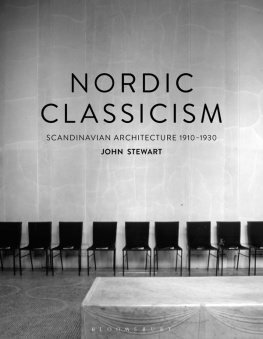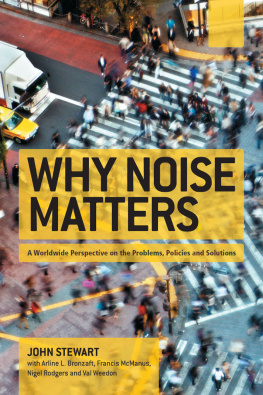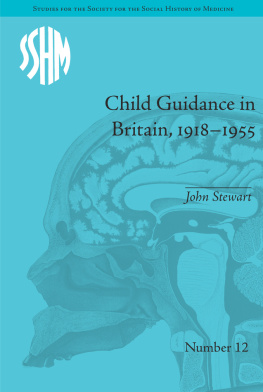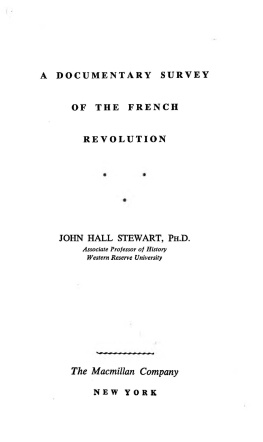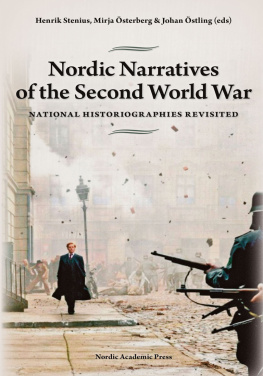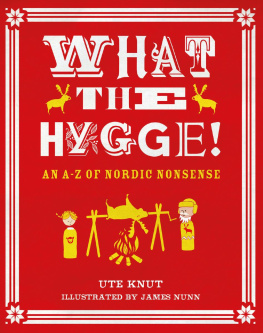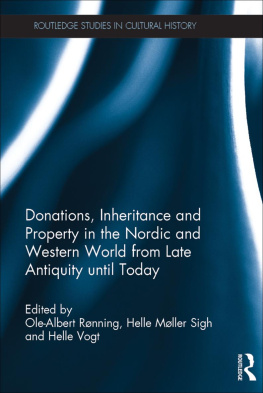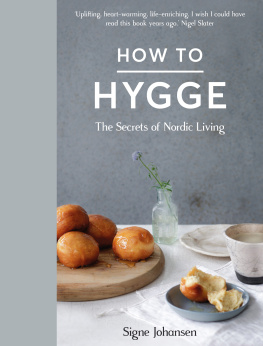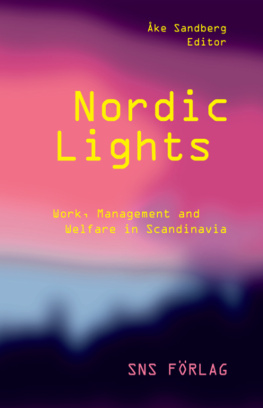Nordic Classicism
Nordic Classicism
Scandinavian Architecture 19101930
JOHN STEWART

To Norah and Andy
I have been fortunate while researching and writing this book to have had the assistance and encouragement of a considerable group of people, ranging from the current custodians of many of the wonderful buildings featured in the book, to several photographers who have kindly provided illustrations and friends and family who have supported and encouraged me.
Id like to thank the following people in particular:
Oregaard School Birgitte Hansen and Bent Johnson
Tandstickspalatset Karin Johansson, Christer Nilsson and Stefan Andersson
Stockholm Concert Hall Karina Svensson
Jyvaskyla Workers Club Maija Nurminen
Copenhagen Police Headquarters Sofie Sidor
Finnish Parliament House Rainer Hindsberg
And finally my wife, Sue, for her constant support, encouragement, research as well as the compilation of the index.
John Stewart
N ordic Classicism is a rather inconvenient period in the history of twentieth-century architecture. The century was dominated by the emergence of the Modern Movement after the First World War and by its global acceptance after the Second World War. In tracing the roots of Modernism, it was long accepted that it emerged as a natural development from the various Art Nouveau, Arts and Crafts, National Romantic and Jugendstil Movements, following their rejection of the nineteenth centurys favoured Gothic and Classical stylistic revivals. The Modern Movement was seen to have continued this search for an alternative, original architectural approach that was more suited to the new and very different needs of the industrialized and industrializing Western nations.
In the Scandinavian countries, the late nineteenth-century radical artistic spirit found its expression in the National Romantic Movement as in other countries, this was partly a rejection of historical revivalism; partly a reaction against increasing industrialization with a corresponding desire to return to a perceived purer, simpler pre-industrial life; partly a renewed interest in regional vernacular architecture, and also a genuine search for a new architecture, more suited to the spirit and needs of the age. The quality of the best architecture of the Nordic National Romantic Movement was as high as the best of the English Arts and Crafts Movement, French or Belgium Art Nouveau, or Austrian Jugendstil. Indeed National Romanticism was accepted more fully in the Scandinavian societies than any similar architectural movement was in any other part of Europe, resulting in an unusually high number of major public buildings in the National Romantic style being carried out throughout the Scandinavian countries.
And yet we find this renewed interest in Classical architecture emerging in Scandinavia in the early part of the twentieth century, not just running in parallel with National Romanticism, but eventually almost entirely replacing it throughout the region from around 1910 to around 1930.
Its acceptance, soon after its emergence, was almost immediate from workers housing to new parliament buildings; we find not only the architects of the region inspired by Classicism once more but also their clients and the public, enthusiastically greeting their new buildings (an achievement which has rarely been repeated, nor even aspired to by many architects since). Far from a consistent journey therefore from National Romanticism to Modernism, it represents an apparent break a backward look a wrong turning or an unexpected distraction from the development of Modernism.
Far from being an embarrassing secret, however, the quality of the best Nordic Classical architecture from this period is extremely high its key buildings not only all remain in use but continue to be much loved and highly valued by their owners, users and communities, who have lovingly restored almost every one of them in recent decades. This architectural movement is increasingly being recognized as having had an importance and originality of its own in successfully responding to Nordic national and international aspirations, in combining richness of ideas with restraint and subtlety in execution, in celebrating so effectively the purpose of each building and, most importantly, in creating humane and beautiful settings in which to live, learn, work, debate, study and reflect.
This book is both an introduction to this fascinating, if brief, architectural period and a celebration of its greatest achievements.
U nlike many other architectural movements, the Nordic Classical period was relatively short starting approximately in 1910 and finishing approximately in 1930. Like most artistic movements, it had its disciples, followers and agnostics, and throughout its short life, it developed against a continuing background of stylistic confusion and eclecticism. It generally replaced the National Romantic Movement in the Scandinavian countries with many of the best National Romantic architects (such as Ragnar stberg, 18661945) going on to contribute to the Nordic Classical Movement and, in turn, many of the best Nordic Classicists (such as Alvar Aalto, 18981976) going on to feature amongst the greatest exponents of Modern Architecture in contrast to the established history of Modernism.
Were the likes of stberg and Aalto inconsistent in their architecture and beliefs mere stylists of the kind typified by Sir George Gilbert Scott (18111878), who was able to change from Gothic to Classical Architecture for his Foreign Office building in London, at the behest of the British prime minister were they simply chasing architectural fashion or were they genuinely responding to the changing world around them? Where did the renewed interest in Classicism that spread throughout Scandinavia in the early twentieth century come from, and why was it later abandoned, almost overnight, by several of its most brilliant practitioners, as Functionalism and the Modern Movement encircled the world? If architecture reflects the society, which it serves, then perhaps we should look to the particular histories of the Baltic countries for some of the answers.
We are so familiar with the current countries of Europe that we forget that several of them didnt exist at the start of the nineteenth century with a few not establishing their independence until the twentieth century. While the powerhouses of Britain, Russia, France and Spain had long imperial histories, Germany and Italy were not unified, and thus created, until the late nineteenth century, and the Scandinavian region did not establish its current form and nations until 1918.
From the demise of the Kalmar Union
Despite these numerous territorial and political changes, by the latter part of the nineteenth century, we can identify a number of key themes, which united these emerging Baltic nations. These were:
A strong and growing nationalist sentiment which found its expression in the arts for example, Sibeliuss (18651957) Karelia Suite in the Grand Duchy of Finland; Munchs (18631944) paintings in the Swedish province of Norway; the establishment and rapid growth of the Herholdt School of Danish Arts and Crafts in Denmark (whose land losses had reinforced their interest in their national identity) and in Sweden itself, where there was a renewed interest in their own culture, represented by Agi Lindegerens (18581927) studies of churches and castles; Frederick lilljekvists (18631932) plea for the reconstruction of Old Stockholm; and the seductive watercolour interiors of Carl Larssons (18531919) home at Sundborn in Dalarna.
A long-established Northern European Lutheran tradition which brought with it a simplicity of worship; a non-hierarchical government of the church by its followers; a simplicity of lifestyle and rejection of luxury, which occasionally led to puritanism (both in Scandinavia and, through emigration, the United States); a strong work ethic; a cultural climate in which the humanities and sciences were encouraged to develop; and the separation of church and state, allowing freedom of conscience.
Next page
